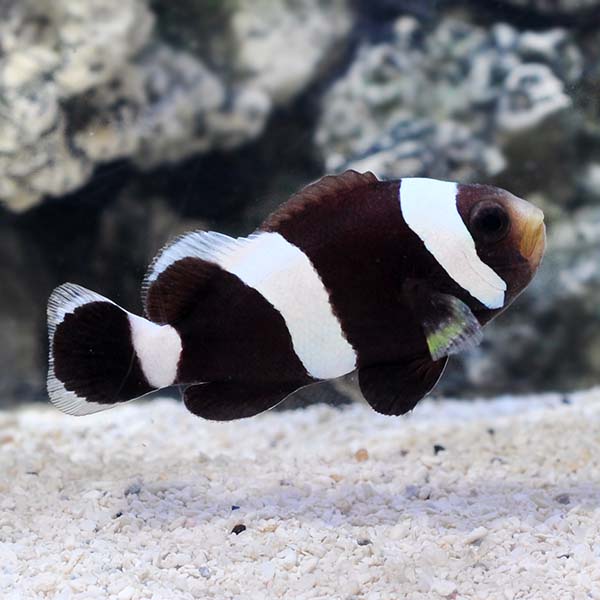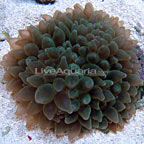
Additional locales and sizes may be available!
Additional locales and sizes may be available! Email me when availableQuick Stats
What do these Quick Stats mean? Click here for more information
What do these Quick Stats mean? Click here for more information
Overview
The Black Saddleback Clownfish, sometimes referred to as the Saddleback Clownfish, is mostly black with a yellow face and striking yellow outlined pectoral fins. The center stripe of this variation covers the width of the body, unlike others within this species.
A 30 gallon or larger aquarium is desirable. It may be kept in small groups and will benefit from a host anemone. They may form relationships with the following species of anemones; Carpet (Stichodactyla sp. ), Sebae (Heteractis crispa), or Ritteri (Heteractis magnifica). (Always be sure that your aquarium and lighting system will support the needs of the host anemone before incorporating one into the aquarium.) It becomes more aggressive towards conspecifics as it ages.
Captive-bred fish have a unique advantage over wild-harvested species, as they are generally very hardy and more accustomed to conditions found in the home aquarium. Therefore, captive-bred fishes make a great choice for novices and seasoned aquarists alike.
The Captive-Bred Black Saddleback is a bit more challenging to spawn and rear than other clownfish species in the home aquarium, but with some effort can be accomplished by the dedicated marine aquarist. The females will be the largest of the pair and the two fish will usually stay close to each other in the aquarium. The females will be the largest of the pair and the two fish will usually stay close to each other in the aquarium. Clownfish are egg layers and will deposit the eggs on a flat surface and defend the eggs from other tank mates. The eggs will normally hatch in 8-11 days depending on the water temperature. The fry must be reared in a separate aquarium on a diet of rotifers followed by baby brine shrimp.
The Black Saddleback Clownfish diet consists of almost any meaty food items and herbivore preparations.Approximate Purchase Size :< /strong> Small: 1/2" to 1-1/4"; Medium: 1-1/4" to 2"; Large: 2" to 3"












